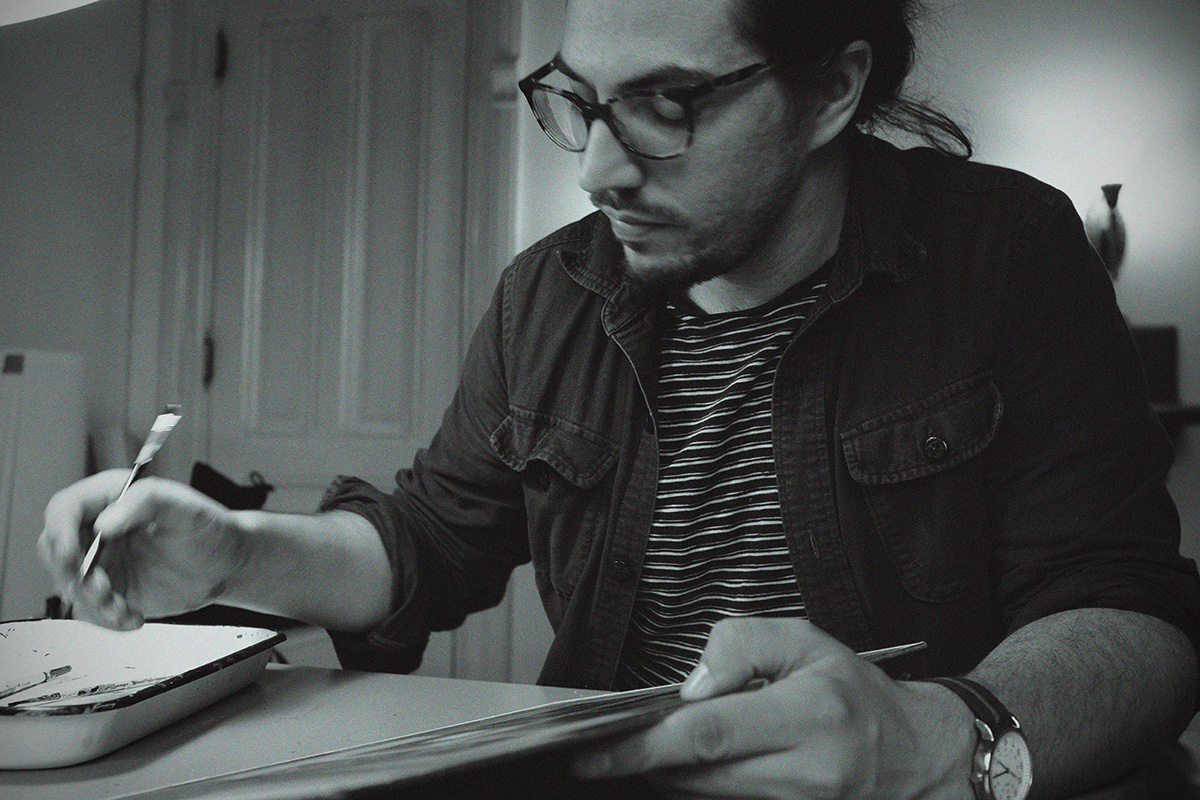b. 1991
Mike Howat is a New Hampshire-based painter and curator. His work explores themes of urbanization, Americana, and collective memory. Since earning his B.F.A. from New Hampshire Institute of Art in 2014, he has exhibited regionally and nationally. He showed regularly with Kelley Stelling Contemporary and has shown with Chase’s Garage, Gay Street Gallery (VA) Rochester Museum of Fine Arts, Nahcotta, Talon Gallery (PDX), Carrie Secrist Gallery (Chicago), Nucleus Portland, among others. Howat was the long-term artist-in-residence at Kimball Jenkins School of Art from 2016- 2020 and in 2021 he was the artist-residence at Gallery 263 in Cambridge, MA. In 2023, he co-founded PILLAR Gallery + Projects, an exhibition space in Concord, NH.
“I’m interested in built environments, how we leave our mark on the spaces we live, and how buildings become records of the people that inhabit them. In recent explorations with monotype, the natural disintegration and distortions of ink inherent to the monotype printing process echo the chaotic entropy of urban decay and the passage of time on the built landscape.
The window paintings emerged as a way to build image from the vantage point of a personal, interior space, and also imply the neighboring apartment looking in towards the viewer. Objects reflective of the current moment, or that have emotional density are scattered on the interior window sill—things like dystopian novels or beer bottles with labels anxiously torn off. The paintings became an assembled collage of landscape, still life and interior from different places, meaningful objects and memories, pulled together by the lighting to create a cogent space.”
Q. If you could offer your younger self any advice at the start of your artistic career, what would it be?”
A. “Just keep producing, responding, and trusting what you gravitate towards. Concept and voice emerge from the organic process of creating work that responds to the world around you and reflections on your own story. If you are painting in a way that is authentic to yourself, finding subjects draw you, developing your own palette and way you interact with materials, it will have concept and contemporary meaning because ultimately it’s a response to the world we’re all currently living in.
I still struggle with those questions of whether my work is conceptually developed enough, whether it’s responding to the contemporary moment enough, whether it’s politically meaningful enough, whether it’s original and authentic enough. It’s important to reflect on those things through writing or when thinking of a new series or exhibition proposal, but most of the time I think those questions are better left outside the door of the studio.”
